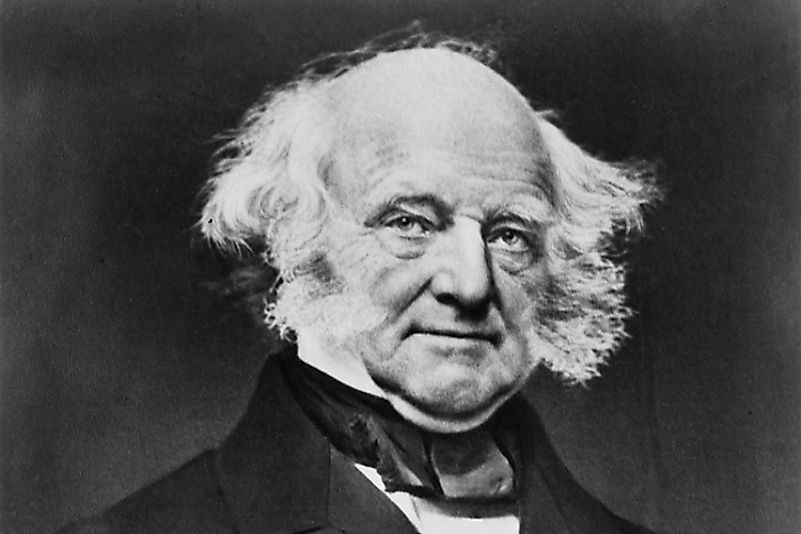Martin Van Buren - US Presidents in History

5. Early Life
Martin Van Buren was born on December 5th, 1782, in Kinderhook, New York, to a family with Dutch ancestral origins. He went to the village schoolhouse when he was young, and then also attended the Kinderhook Academy, as well as the Washington Seminary in Claverack. He was known for being only 5 feet and 6 inches in height, though he learned from an early age to make it up by dressing proudly and with style. Starting in 1796, he worked at a law office under Peter Silvester, which he did for 6 years. Martin spent the last year of his legal apprenticeship term with William P. Van Ness, who was a Democratic-Republican that he shared many political views with. He successfully passed the bar in 1803, and shortly thereafter started a law practice of his own.
4. Rise to Power
As a young lawyer, Van Buren became very involved in local politics. He supported the 'Bucktail' faction of the Democratic-Republican party, a group that firmly believed in limited government. In 1812, Van Buren was elected to the New York State Senate, and three years later he was appointed as New York's Attorney General. In 1821, he ran for a seat in the U.S. Senate representing New York, and was successfully elected. After that, he served various governmental positions, including as the Governor of New York and U.S. Secretary of State, and was chosen to be the Vice President for Andrew Jackson. At the end of Jackson's term, Van Buren was nominated to run for U.S. President on the Democratic ticket, and he was elected in the 1836 National Election as the 8th President of the United States.
3. Contributions
Van Buren was a firm believer in a minimalist government, and thusly in limited governmental intervention in economics. He lowered tariffs and endorsed free trade, and hence secured his party's support in the South. He sought to avoid conflicts both at home and in the realm of international relations. He denied Texas's formal request to join the U.S. as a slave-holding state in 1837. This was to not only avoid disturbing the balance at home, but also to avoid going into war with Mexico in regard to the annexation of Texas. He also helped to form the Democratic Party alongside Andrew Jackson.
2. Challenges
Shortly after he took office, Van Buren faced a massive financial panic, caused by the immature, and vulnerable, U.S. financial system in place at the time.The crisis caused many banks and businesses to fail, and meant a loss of property for many. Van Buren's solution was to set up an independent treasury. Still, his inability to react to the crisis in due time caused the American public lose trust in him. Meanwhile, the U.S. and Britain fell into a dispute over the Maine-New Brunswick border when he was Secretary of State, and were on the verge of war over it. Van Buren sought to avoid conflict, and instead resolved the issue through diplomatic means, more or less reaching a peaceful solution with Great Britain.
1. Death and Legacy
Martin Van Buren died of bronchial asthma and heart failure on July 24th, 1862, at his family home in Kinderhook, at the age of 79. Critics cite that Van Buren did not successfully accomplish very much during his fairly short presidency. Though many public places, schools, and cities have been named after him, historical evaluations of him have mostly tended to be negative. The worst of all of Van Buren's policies was the Indian Removal Act of 1830, which he supported when he was still Secretary of State, which forced the Cherokee and many other groups of indigenous peoples from the Southeast U.S. to relocate to west of the Mississippi. The forceful removal, commonly known as the "Trail of Tears", is often considered an act of genocide due to the numbers of lives lost along the way. Unfortunately, it was but one sad chapter in a multigenerational tale of inhumane treatment of indigenous peoples within the U.S.











